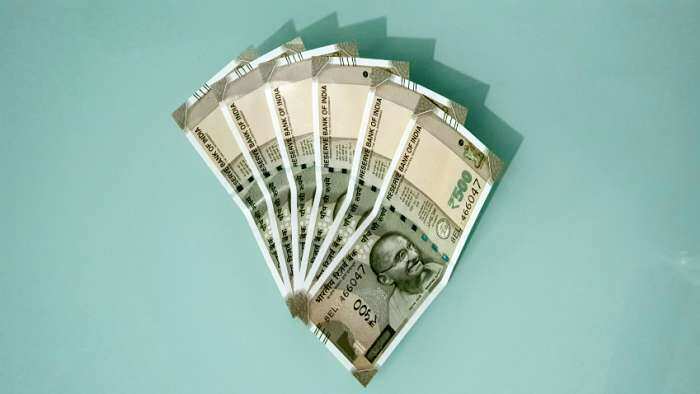How is your electricity bill calculated? Check out the tariffs of major cities
The Bangalore Electricity Supply Company (Bescom), which accounts for around 50 per cent of the electricity supply in the state, had announced a tariff hike of Rs 2.89 per unit for June. In Mumbai, the electricity bill is calculated by adding the Fixed Charges (per month), Energy Charges, Wheeling Charges (per unit), Fuel Adjustment Charges, and Electricity Duty.
)
The Centre has recently amended the Electricity (Rights of Consumers) Rules, 2020, to introduce a new tariff system. The two major changes include the Time of Day (TOD) Trariff system and the rationalisation of smart metering provisions. These two major changes introduced, after the amendment to the 2020 Rules on June 23, could significantly change your electricity bill amounts every month depending on the usage.
It is important that you should know how your electricity bill is calculated as it will help you in managing your energy expenses effectively. By analysing your energy usage and calculating the associated costs, you can make informed decisions to optimise your electricity consumption and save money.
So, let us take a look at how the calculation of an electricity bill is carried out in some of the major metro cities like Delhi, Mumbai, Bengaluru and Chennai.
Power Tariff in Delhi
The electricity bill in the national capital is calculated by the calculation of consumption slabs, which is done on the basis of the actual number of days in the particular billing month.
Let us take the help of an example to understand the calculation.
If the billing period is 31 days and covers 26 days of June and 5 days of July with total consumption of 448 units, the slab wise calculation will be:
Calculation of First Slab:
Calculation for units of June: 200 (First slab units) / 30 (No. of days in June) X 26 (No. of days billed for June) = 173.33 (units entitled for first slab)
Calculation for units of July: 200 (First slab units) / 31 (No. of days in July) X 05 (No. of days billed for July) = 32.25 (units entitled for first slab)
Total units entitled for First Slab = 205.58 Units (Rounded off to 206 Units)
Calculation of Second Slab:
Calculation for units of June: 200 (Second slab units) / 30 (No. of days in June) X 26 (No. of days billed for June) = 173.33 (units entitled for Second slab)
Calculation for units of July: 200 (Second slab units) / 31 (No. of days in July) X 05 (No. of days billed for July) = 32.25 (units entitled for first slab)
Total units entitled for Second Slab = 205.58 Units (Round off 206 Units)
Calculation of Third Slab:
448 (Total units consumed) – ((206 (First Slab Units) + 206 (Second Slab Units)) = 36 Units
Eligibility for subsidy basis consumption
The table below shows the maximum units on an average a domestic consumer can use daily for getting subsidy.
|
Consumed Units |
Month having 28 days |
Month having 29 days |
Month having 30 days |
Month having 31 days |
|
0-200 |
7.14 |
6.9 |
6.67 |
6.45 |
|
201-400 |
14.29 |
13.79 |
13.33 |
12.9 |
It is worth noting that if you want to avail subsidy of the entire bill amount, then your consumption should not exceed 200 units. If your consumption is between 201 units and 400 units, then you will be eligible to receive a subsidy of Rs 800.
Bengaluru
The Karnataka government has recently announced that it will offer 200 units of free electricity to every household in the state under the Gruha Jyothi scheme. This essentially means that if your consumption does not exceed 200 units, then you can avail subsidy for the entire bill amount. It is worth noting that the Bangalore Electricity Supply Company (Bescom), which accounts for around 50 per cent of the electricity supply in the state, had announced a tariff hike of Rs 2.89 per unit for June. Additionally, Bescom’s electricity tariff for the ongoing fiscal year has been hiked by Rs 0.70 per unit.
If consumption of electricity crosses 100 units, a consumer has to pay a tariff of Rs 7 per unit. Besides, Karnataka Electricity Regulatory Commission (KERC) has also revised fixed charges. For 1 to 50 KW sanctioned load, fixed charge is Rs 110 and above 50 KW, it will be Rs 210.
Unless you are eligible for the Gruha Jyothi scheme, your electricity bill in the new tariff structure will consist of the following elements - Fixed charge, Energy charge, Tax, and Fuel and Power Purchase Cost Adjustment (FPPCA).
For Example, if a household consumes 205 units the bill amount under new tariff structure will be- Fixed charge of Rs 210 + Energy charge of Rs 7 per unit for 205 units
Mumbai
Maharashtra Electricity Regulatory Commission (MERC) allowed power distribution companies like Brihanmumbai Electric Supply & Transport Undertaking (BEST), TATA Power, Maharashtra State Electricity Distribution Co. Ltd (MSEDCL) and Adani Power to hike the power tariff, which came into effect from April 1.
The revised tariff for all discoms in Mumbai:
|
Slabs |
BEST |
Tata Power |
Adani Electricity |
MSEDCL |
|
0-100 units |
3.69 |
4.73 |
5.66 |
5.58 |
|
101-300 units |
7.04 |
7.33 |
7.76 |
10.81 |
|
301-500 units |
10.63 |
10.98 |
9.66 |
14.78 |
|
500+ units |
12.60 |
11.63 |
10.76 |
16.74 |
In Mumbai, the electricity bill is calculated by adding the Fixed Charges (per month), Energy Charges, Wheeling Charges (per unit), Fuel Adjustment Charges, and Electricity Duty.
Kolkata
The Calcutta Electric Supply Corporation (CESC) is a prominent discom of Kolkata. Its bill is calculated by adding the total energy charges, applicable statutory charges and other costs.
Applicable statutory charges include monthly variable cost adjustment (if any), fixed charges (as per tariff rate) and meter rent.
Other charges include government duty and adjustments (if any).
|
Electricity Tariff as per slabs |
Total amount- Sample Case (Consumption of 350 Units) |
|
First 25 units (Rs 4.89 per unit) |
Rs 122.25 |
|
Next 35 units (Rs 5.40 per unit) |
Rs 189.00 |
|
Next 40 units (Rs 6.41 per unit) |
Rs 256.00 |
|
Next 50 units (Rs 7.16 per unit) |
Rs 358.00 |
|
Next 50 units (Rs 7.33 per unit) |
Rs 366.50 |
|
Next 100 units (Rs 7.33 per unit) |
Rs 733.00 |
|
Above 300 units (Rs 8.92 per unit) |
Rs 446.00 |
Therefore, total energy charges in this case are coming to be Rs 2470.75 for 350 units.
Chennai
In 2022, Tamil Nadu Electricity Regulatory Commission had approved the tariff revision plan of the Tamil Nadu Generation and Distribution Corporation (Tangedco).
The domestic consumers will have to pay Rs 4.50 per unit up to 400 units for two months. The tariff is Rs 6.50 per unit from 401 to 500 units, and Rs 8 per unit for 501 to 600 units.
Above 600 units and up to 800, consumers will have to pay Rs 9 per unit.
Meanwhile, Rs 10 per unit will be charged for 801 to 1,000 units and Rs 11 per unit will be levied for above 1,000 units.
Delhi’s retail tariff vs tariff of major metros and neighbouring states
Delhiites, belonging to the low-end residential category, enjoy lowest energy charges per unit as compared to many other states. Customers in other categories have to pay less electricity tariff than the residents of other major cities.
|
|
City/State |
Tariff (per unit) |
|
Metros
|
Delhi |
5.23 |
|
Kolkata |
6.46 |
|
|
Mumbai |
5.65 |
|
|
Bengaluru |
5.58 |
Get Latest Business News, Stock Market Updates and Videos; Check your tax outgo through Income Tax Calculator and save money through our Personal Finance coverage. Check Business Breaking News Live on Zee Business Twitter and Facebook. Subscribe on YouTube.
RECOMMENDED STORIES

Top 7 Mutual Funds With Highest SIP Returns in 1 Year: Rs 33,333 monthly SIP investment in No. 1 scheme has generated Rs 4.77 lakh; know about others too

SBI 444-day FD vs PNB 400-day FD: Here's what general and senior citizens will get in maturity on Rs 3.5 lakh and 7 lakh investments in special FDs?

Rs 4,000 Monthly SIP for 33 years vs Rs 40,000 Monthly SIP for 15 Years: Which can give you higher corpus in long term? See calculations

Sukanya Samriddhi Yojana vs PPF: Rs 1 lakh/year investment for 15 years; which can create larger corpus on maturity?
05:47 PM IST








 Average power purchase cost rises 71 paise/unit in FY22-23
Average power purchase cost rises 71 paise/unit in FY22-23 Government sets criteria for allocation of power from central pool to states, UTs
Government sets criteria for allocation of power from central pool to states, UTs Take proactive actions, ensure no load shedding during summer: Govt tells power companies
Take proactive actions, ensure no load shedding during summer: Govt tells power companies Power prices expected to remain firm next fiscal amid higher demand: Crisil
Power prices expected to remain firm next fiscal amid higher demand: Crisil Government to invite bids for power from 8,000 megawatt thermal capacities without PPAs
Government to invite bids for power from 8,000 megawatt thermal capacities without PPAs